Are "Penalty-Free" 401k
Withdrawals Free?
On March 27, the government passed the Coronavirus Aid, Relief, and Economic Security Act, otherwise known as the CARES Act. The Act had a wide range of provisions to provide Americans and small businesses with economic support during the coronavirus pandemic. The bill provided stimulus payments, enhanced unemployment, and various forms of business loans.
One provision that flew under the radar was the ability for qualified individuals to take distributions from their 401(k) plans and IRAs without paying early distributions penalties. Normally, you face a 10% early distribution penalty if you take a withdrawal from these accounts before age 59 ½.1
However, under the CARES Act you can take up to $100,000 as a penalty-free distribution from your qualified accounts, assuming you are a qualified individual.2 Are you qualified? And even if you can take a distribution, is it wise to do so?
CARES Act Qualified Plan Distributions
Under the CARES Act, you can take up to $100,000 in qualified plan distributions if you are a qualified individual. Who is qualified? Anyone who meets the following criteria:
- You are diagnosed with the virus SARS-CoV-2 or with coronavirus disease 2019 (COVID-19) by a test approved by the Centers for Disease Control and Prevention;
- Your spouse or dependent is diagnosed with SARS-CoV-2 or with COVID-19 by a test approved by the Centers for Disease Control and Prevention;
- You experience adverse financial consequences as a result of being quarantined, being furloughed or laid off, or having work hours reduced due to SARS-CoV-2 or COVID-19;
- You experience adverse financial consequences as a result of being unable to work due to lack of child care due to SARS-CoV-2 or COVID-19; or
- You experience adverse financial consequences as a result of closing or reducing hours of a business that you own or operate due to SARS-CoV-2 or COVID-19.2
If you meet any of these criteria and you decide to take a distribution, you won’t have to pay the 10% early distribution penalty, even if you are under age 59 ½. However, you will still have to pay income taxes on the distribution. You can spread the taxes out over a three-year period, but you still have to pay them.2
Should you take a CARES Act distribution?
A CARES Act distribution may be the right strategy if you are in a financial crisis and have limited avenues available for relief. However, just because the distribution is “penalty-free” doesn’t mean it comes without consequences.
In addition to paying taxes on the distribution, you’ll also forego any future growth on the assets you withdraw. Tax-deferred growth is one of the biggest advantages of a qualified account. However, if you pull out funds, you lose all future tax-deferred growth on that amount. That could lead to a substantial reduction in your future assets at retirement.
Instead of dipping into your 401(k) or IRA, consider what other options you may have available. For instance, perhaps you could tighten your budget. Maybe you could refinance mortgages or other loans, or even renegotiate new payment terms. You may even consider picking up additional work until the crisis passes. It may be tempting to take an IRA distribution, but you’re only taking money from your future self.
Let’s talk about strategies to help you get through this period. Contact us today at Benefit Resource Partners. We can help you analyze your needs and develop a plan. Let’s connect soon and start the conversation.




